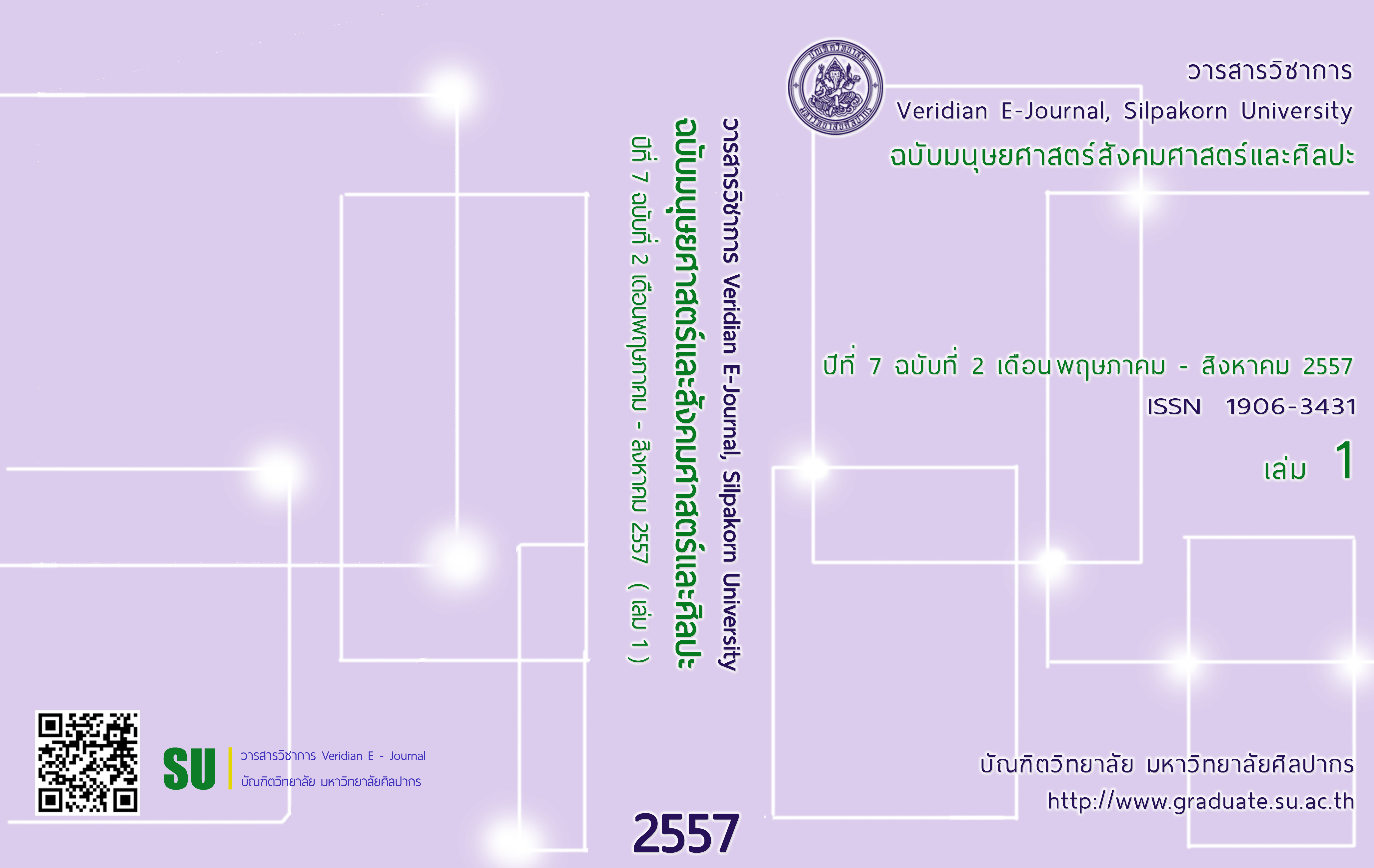ผลกระทบที่มีบทบาทต่อความเปลี่ยนแปลงรูปแบบการประดับตกแต่งอาคารทางศาสนาในวัด (ประเภทวัดราษฎร์)
Main Article Content
Abstract
บทคัดย่อ
ศาสนสถานตามแหล่งชุมชนที่เรียกว่า วัดราษฎร์ อันหมายถึง วัดที่ประชาชนร่วมแรงร่วมใจ กันสร้างขึ้นแวดล้อมด้วยอาคารทางศาสนา เพื่อใช้ประโยชน์ในการประกอบพิธีสังฆกรรมของพระภิกษุสงฆ์ ส่งเสริมความงดงามอลังการด้วยศิลปกรรมประดับตกแต่งที่ผ่านกระบวนวิธีอันวิจิตรบรรจงของช่างฝีมือผู้ชำนาญการ สร้างสรรค์ สั่งสม จนเกิดเป็นค่านิยมที่บ่งบอกถึงรสนิยมทางความงามของสังคม อันเป็นรากเหง้าของคนไทยมาแต่โบราณกาล เฉกเช่นที่เคยปรากฏในสมัยราชธานีสุโขทัย ราชธานีอยุธยามาแล้ว และได้ผ่านช่วงเวลาอันยาวนานพร้อมกับพัฒนาการที่เปลี่ยนแปลงไปตามสภาพสังคม การเมือง เศรษฐกิจ ขนบธรรมเนียม จารีต ประเพณี วัฒนธรรม อันมีผลกระทบต่อรูปแบบงานศิลปกรรมและบทบาทหน้าที่ของช่างฝีมือผู้สร้างสรรค์ทั้งทางตรงและทางอ้อม ซึ่งได้ปรากฏภาพลักษณ์ที่มีแนวโน้มของความเสื่อมถอย ด้วยความสำคัญของเรื่องดังกล่าว เป็นแรงบันดาลใจให้นำมาวิเคราะห์ถึงเหตุปัจจัยต่างๆ ทั้งปัจจัยภายในที่เกิดจากการกระทำของช่างฝีมือเองและปัจจัยภายนอกที่เกิดจากสภาพสังคมปัจจุบัน ที่เป็นปัญหาเกี่ยวเนื่องซึ่งกันและกัน พร้อมทั้งวิเคราะห์เชิงเปรียบเทียบถึงรูปแบบการประดับตกแต่งอาคารทางศาสนาระหว่างสมัยอยุธยาตอนปลายกับสมัยปัจจุบัน เพื่อให้เห็นถึงพัฒนาการรูปความงาม ค่านิยม และรสนิยมที่เปลี่ยนแปลงไป
Abstract
Located in community areas, religious places called common temples refer to those cooperatively constructed by local people. They are actually surrounded by religious buildings with an aim as the places for Buddhist monks to perform religious ceremonies, as well as for a promotion of their spectacular beauty through a process of artistic decorations exquisitely created and accumulated by skilled craftsmen resulting in creating the value that identifies the society’s taste of beauty. This has been regarded as a grass root of Thai people since the ancient time as evident in the era of Sukhothai and Ayutthaya kingdoms. It has gone through a long period of time concurrently with the developing changes that correspond to social, political, economic, traditional, and cultural situations and circumstances. It would, therefore, yield either direct or indirect impact on artistic work forms, as well as on roles and duties of creative skilled craftsmen. However, the appearing image with this regard tends to be declining. As a consequence, there is an inspiration for the analyses of different factors not only the internal ones caused by the craftsmen’s actual performance but also the external factors stemming from current social conditions that lead to the connecting problems. Besides, there would be comparative analyses for decorative forms of religious constructions between those in the late Ayutthaya period and the ones at present in order to reveal the development of beauty forms, values and tastes which have been changing